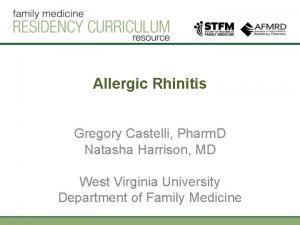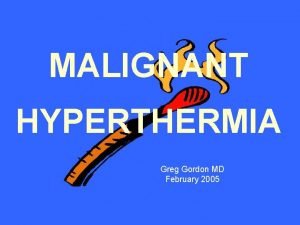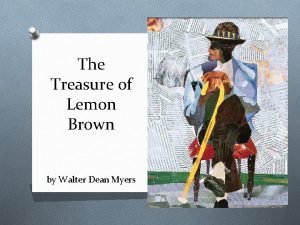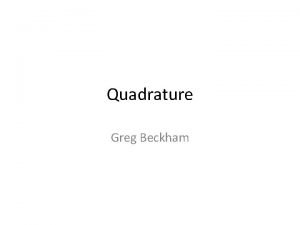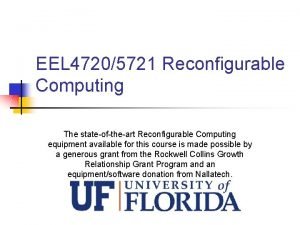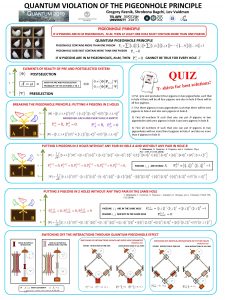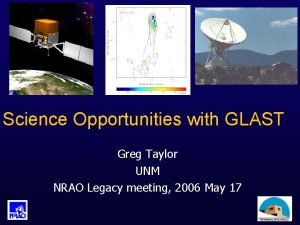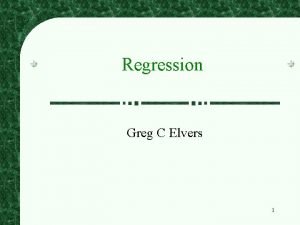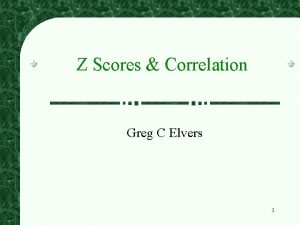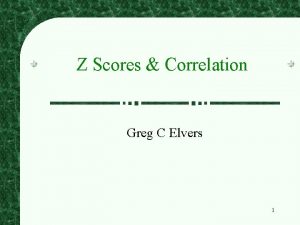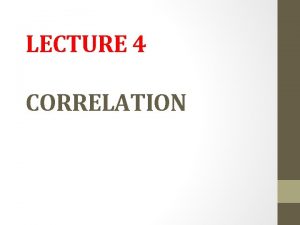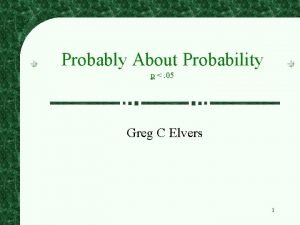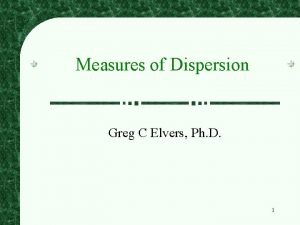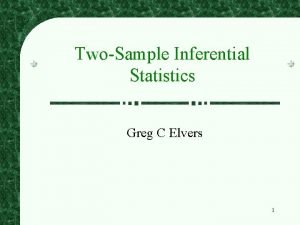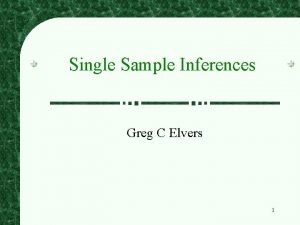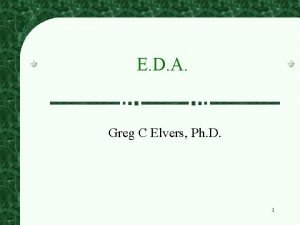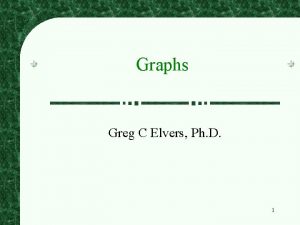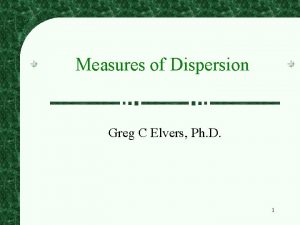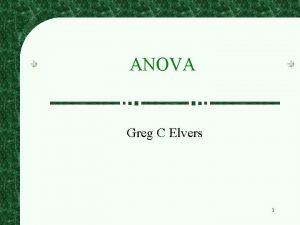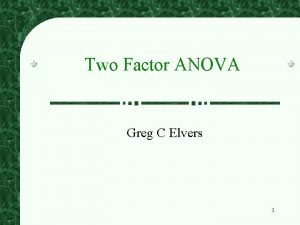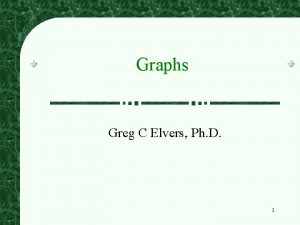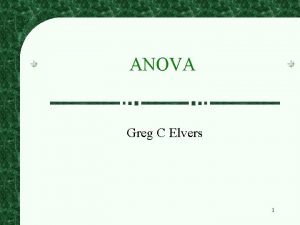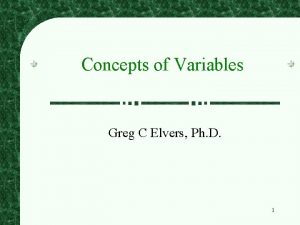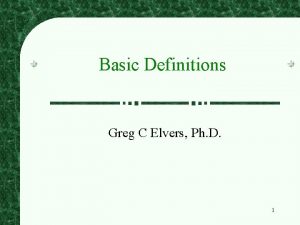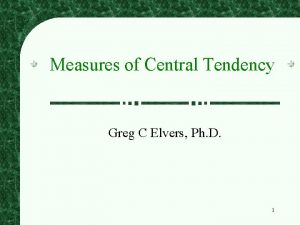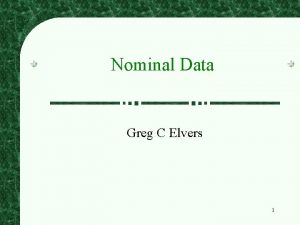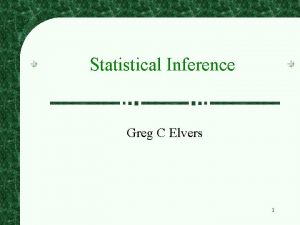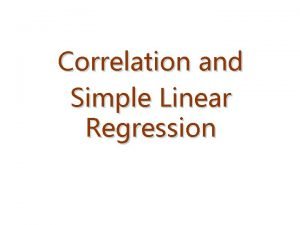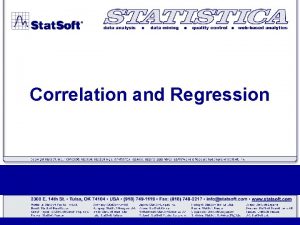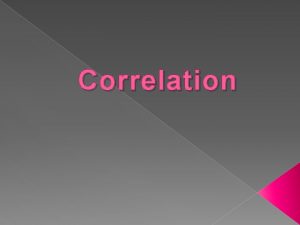Correlation Greg C Elvers 1 What Is Correlation






























- Slides: 30

Correlation Greg C Elvers 1

What Is Correlation? Correlation is a descriptive statistic that tells you if two variables are related to each other E. g. Is your GPA related to how much you study? When two variables are correlated, knowing the value of one variable allows you to predict the value of the other variable 2

Perfect Correlation When two variables are perfectly correlated, knowing the value of one variable allows you to exactly predict the value of the other variable 3

Perfect Correlation For example, if the only thing that determined your GPA was the amount of time that you studied, then the two would be perfectly correlated If you know the value of one variable, you can exactly determine the value of the other variable 4

Perfect Correlation That is, all the variability in one variable is explained by the variability in the other variable 5

Perfect Correlations Few, if any, psychological variables are perfectly correlated with each other Many non-psychological variables do have a perfect correlation E. g. Time since the beginning of class and the time remaining in the class are perfectly correlated What are other examples of perfectly correlated variables? 6

Less Than Perfect Correlations Even if two variables are correlated, most of the time you cannot perfectly predict the value of one variable given the other E. g. , other variables besides amount of time spent studying influence your GPA Some of the variability is people’s GPA is due to the amount of time spent studying, but not all the variability is due to it 7

Less Than Perfect Correlations 8

Less Than Perfect Correlations With a less than perfect correlation, we can no longer perfectly predict the value of one variable given the other variable We cannot explain all the variability in one variable with the variability in the other variable 9

The Correlation Coefficient Correlation coefficients tell us how perfectly two (or more) variables are related to each other They can also be used to determine how much variability in one variable is explainable by variation in the other variable. 10

Pearson’s Product Moment Correlation Coefficient Pearson’s product moment correlation coefficient, or Pearson’s r, for short is a very common measure of how strongly two variables are related to each other Pearson’s r must lie in the range of -1 to +1 inclusive 11

Interpretation of Pearson’s r To interpret Pearson’s r, you must consider two parts of it: The sign of r The magnitude, or absolute value of r 12

The Sign of r When r is greater than 0 (I. e. its sign is positive) the variables are said to have a direct relation In a direct relation, as the value of one variable increases, the value of the other variable also tends to increase 13

The Sign of r When r is less than 0 (i. e. , its sign is negative) the variables are said to have an indirect relation In an indirect relation, as the value of one variable increases, the value of the other variable tends to decrease 14

Is the Sign of r + or -? As the number of cigarettes smoked per day increases, GPA tends to decrease As the number of cats in a farm yard increases, the number of mice tends to decrease As the weight of a cat increases, the length of its whiskers tends to increase 15

Is the Sign of r + or -? Create two examples of correlations and determine if the sign of r is positive or negative 16

The Magnitude of r The magnitude refers to the size of the correlation coefficient ignoring the sign of r The magnitude is equivalent to taking the absolute value of r The larger the magnitude of r is, the more perfectly the two variables are related to each other The smaller the magnitude of r is, the less perfectly the two variables are related to 17 each other

r=1 When r equals 1. 0, there is a perfect correlation between the variables Knowing the value of one variable exactly predicts the value of the other variable 18

r=0 When r equals 0, either the assumptions of correlation have been violated or there is no relation between the two variables The points in a scatter plot with r = 0 will tend to form a circular cluster 19

0<|r|<1 The larger the magnitude or r is, the more the scatter plot’s points will tend to cluster tightly about a line 0<|r|<1 20

Magnitude of r Cohen (1988) Correlation Negative Positive recommends the following values of r Small -. 29 to -. 10 to. 29 for “small”, “medium”, and “large” Medium -. 49 to -. 30 to. 49 effects Large -1. 00 to -. 50 to 1. 00 21

Magnitude of r List a couple of pairs of variables and guess whether the magnitude of r is closer to 0 or closer to 1 22

Pearson’s r makes several assumptions about the data When these assumptions are violated, r must be interpreted with extreme caution Assumptions: Linear relation Non-truncated range Sufficiently large sample size 23

Linear Relation Pearson’s r, in its simplest form, only works for variables that are linearly related That is, the equation that allows us to predict the value of one variable from the value of the other is a line: Y = slope * X + intercept Always look at the scatter plot to determine if the two variables are approximately linearly related 24

Linear Relation If the variables are not linearly related, Pearson’s r will indicate a smaller relation than actually exists Often, non-linear relations can be transformed into linear ones by taking the appropriate mathematical transformation 25

Square Root of Y Transformation 26

Non-Truncated Range A truncated range occurs when the range of one of the variables is very small When the range is truncated, Pearson’s r will indicate a smaller relation between the variables than what actually exists Once a range truncation occurs, there is little that you can do; be careful not to design studies that will lead to a truncated 27 range

Truncated Range A linear relation clearly exists in this data Consider only the data in the square (thereby truncating the range) Is the linear relation as clear as it was? No 28

Sample Size If the size of the sample is too small, relations can appear due to chance These relations disappear when a larger sample is considered Too large of a sample can make near 0 correlations statistically significant, even though they have very little explanatory power 29

Sample Size The magnitude of r does not depend on sample size The likelihood of finding a statistically significant r does depend on sample size The sample should be large enough to generalize to the population of interest 30
 Eva statistics
Eva statistics Positive correlation versus negative correlation
Positive correlation versus negative correlation Positive vs negative correlation
Positive vs negative correlation Greg quinn caredx
Greg quinn caredx Greg buss
Greg buss Allavert
Allavert Greg harris homeschool
Greg harris homeschool Greg gordon md
Greg gordon md Maile takahashi
Maile takahashi Greg crooks
Greg crooks Instant indexing
Instant indexing Greg ricker
Greg ricker Greg surratt seacoast church
Greg surratt seacoast church Greg cibuzar
Greg cibuzar Greg goslin
Greg goslin Which item is part of lemon brown’s treasure?
Which item is part of lemon brown’s treasure? Fat land greg critser
Fat land greg critser Greg rowland semiotics
Greg rowland semiotics When creating an ad how does greg
When creating an ad how does greg Greg & steve we all live together, volume 2
Greg & steve we all live together, volume 2 Greg tielke
Greg tielke Newton cotes formula
Newton cotes formula Reconfigurable computing uf
Reconfigurable computing uf Greg from nvidia
Greg from nvidia Caia level 2 exam weights
Caia level 2 exam weights Greg ptolemy
Greg ptolemy Shrobona bagchi
Shrobona bagchi Greg ahearn
Greg ahearn Greg taylor unm
Greg taylor unm Greg tolbert
Greg tolbert Greg costikyan
Greg costikyan





